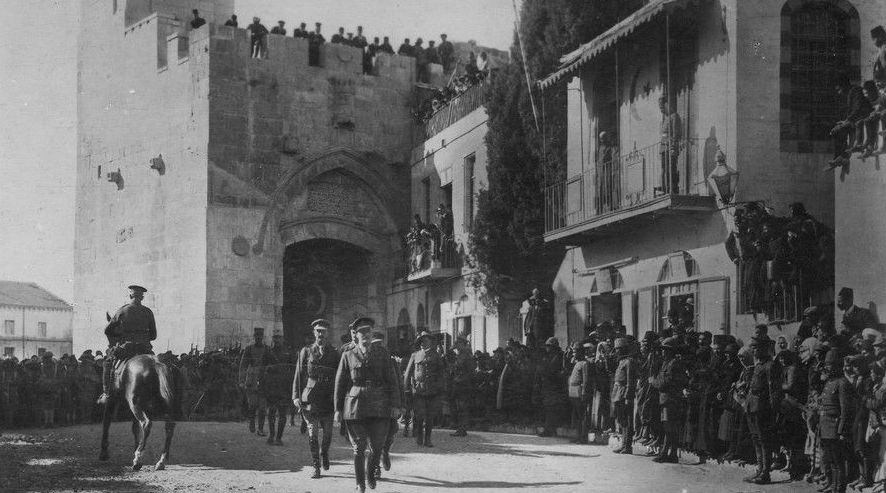Travel Images Between Europe and the Ottoman Empire
Episode 473
For centuries, people have been documenting their travels with images, which purportedly function as visual evidence for someone’s experience far from home. This was no less the case for Europeans touring through Ottoman lands, who created a whole industry selling pictures from their time abroad. In this episode, Elisabeth Fraser explains how Western European artists at the turn of the eighteenth century began to create a new type of popular media, the illustrated travel volume. But these were not small guide books to tuck away in your pocket, they were large-scale luxury publications for the discerning armchair traveler. The enormous size and high production quality of these books and the accompanying images means that they were not the work of a single person but rather a large team of artists. Reflecting on these questions of authenticity, Dr. Fraser discusses how her research aims to take up a more nuanced view of the complexities of cross-cultural encounter.
 | Click for RSS Feed | 
|

|
Contributor Bios
 |
Elisabeth Fraser is Professor of Art History at the University of South Florida, Tampa, where she teaches classes on art and travel, cross-cultural collecting, and global material culture. She has recently edited a volume of essays, The Mobility of People and Things in the Early Modern Mediterranean, and is currently writing a book on Ottoman costume albums and their relationship to European print culture, Dressing the Ottoman Empire: Early Modern Costume Albums and Transculturation. |
 |
Emily Neumeier is Assistant Professor of Art History at Temple University. Her research concerns the art and architecture of the Islamic world, particularly of the Ottoman Empire and the Turkish Republic. She is co-curator of our series on The Visual Past. |
Further Listening
 |
Mary Roberts | 445
1/18/20
|
Ottomans, Orientalists, and 19th-Century Visual Culture |
 |
Zeynep Çelik | 399
1/26/19
|
Orientalism in the Ottoman Empire |
 |
Robyn Dora Radway | 465
7/5/20
|
Mementos from Habsburg Life in Ottoman Istanbul |
 |
Fatih Parlak | 460
4/19/20
|
Erken Modern Avrupa Oyunlarındaki Türk İmgesi |
Credits
Episode No. 473
Release Date: 25 August 2020
Recording Location: Tampa, Florida
Audio editing by Maryam Patton and Emily Neumeier
Music: “Wolfgang Amadeus Mozart — Rondo Alla Turca (Alaturka Remix)” by Allerletzte, 2016 & “Aebali” by Kostas Gadinis, 1940
Bibliography and links courtesy of Dr. Elisabeth Fraser
Release Date: 25 August 2020
Recording Location: Tampa, Florida
Audio editing by Maryam Patton and Emily Neumeier
Music: “Wolfgang Amadeus Mozart — Rondo Alla Turca (Alaturka Remix)” by Allerletzte, 2016 & “Aebali” by Kostas Gadinis, 1940
Bibliography and links courtesy of Dr. Elisabeth Fraser
Images
 |
| Figure 1. View of a Theatre at Telmissus. J. Dambrun, engraving after J.B. Hilair. Plate 71 from Choiseul-Gouffier, Voyage pittoresque de la Grèce, 1782. |
 |
| Figure 3. Adam and Eve. J.B. Tilliard, engraving after J.B. Hilair? Plate 1 from Ohsson, Tableau général de l’Empire Othoman, vol. 1, 1787. |
 |
| Figure 5. A Greek: Logothetes of Livadia, detail. Louis Dupré, hand-colored lithograph. Plate XV from Dupré, Voyage à Athènes et à Constantinople, 1825. |
Bibliography
Fraser, Elisabeth. Mediterranean Encounters: Artists Between Europe and the Ottoman Empire, 1774-1839. Penn State University Press, 2017.
Digitized travel books viewable online
Choiseul-Gouffier, Voyage pittoresque de la Grèce. Paris, 1782-[1822].
Cassas, Voyage pittoresque de la Syrie, de la Phoenicie, de la Palaestine et de la Basse Aegypte. Paris, 1799.
d’Ohsson, Tableau général de l’Empire Othoman. Paris, 1787-1820.
Melling, Voyage pittoresque de Constantinople et des rives du Bosphore. Paris, 1819.
Further Reading
Aksan, Virginia. "Who was an Ottoman? Reflections on 'Wearing Hats' and 'Turning Turk'." In Europa und die Türkei im 18. Jahrhundert / Europe and Turkey in the Eighteenth Century, edited by Barbara Schmidt-Haberkamp, 304-18. Bonn: Bonn University Press, 2011.
Avcıoğlu, Nebahat. Turquerie and the Politics of Representation, 1728-1876. Burlington, VT: Ashgate, 2011.
Brummett, Palmira. Mapping the Ottomans: Sovereignty, Territory, and Identity in the Early Modern Mediterranean. New York: Cambridge University Press, 2015.
Do Paço, David. L’Orient à Vienne au dix-huitième siècle. Oxford: Voltaire Foundation, 2015.
Dobie, Madeleine. “Translation in the Contact Zone: Antoine Galland's Mille et une nuits: Contes arabes.” In The Arabian Nights in Historical Context: Between East and West, edited by Saree Makdisi and Felicity Nussbaum, 25-49. Oxford: Oxford University Press, 2008.
Ghobrial, John Paul A. The Whispers of Cities: Information Flows in Istanbul, London, and Paris in the Age of William Trumbull. Oxford: Oxford University Press, 2014.
Hamadeh, Shirine. The City’s Pleasures: Istanbul in the Eighteenth Century. Seattle: University of Washington Press, 2007.
Landweber, Julia. "Fashioning Nationality and Identity in the Eighteenth Century: The Comte de Bonneval in the Ottoman Empire." International History Review 30, no. 1 (March 2008): 1-31.
Philliou, Christine. Biography of an Empire: Governing Ottomans in an Age of Revolution. Berkeley: University of California Press, 2011.
Roberts, Mary. Istanbul Exchanges: Ottomans, Orientalists, and Nineteenth-Century Visual Culture. Berkeley: University of California Press, 2015.
Rothman, Natalie. "Dragomans and 'Turkish Literature': The Making of a Field of Inquiry." Oriente Moderno 93 (2013): 390-421.
———. "Visualizing a Space of Encounter: Intimacy, Alterity, and Trans-Imperial Perspective in an Ottoman-Venetian Miniature Album." Osmanlı Araştırmaları / Journal of Ottoman Studies 40 (December 2012): 39-80.
Smentek, Kristel. "Looking East: Jean-Étienne Liotard, the Turkish Painter." Ars Orientalis 39 (2010): 85-112.
Talbot, Michael. British-Ottoman Relations, 1661-1807: Commerce and Diplomatic Practice in Eighteenth-Century Istanbul. Woodbridge: Boydell Press, 2017.
Zarinebaf, Fariba. Mediterranean Encounters: Trade and Pluralism in Early Modern Galata. Oakland: University of California Press, 2017.













Comments
Post a Comment
Due to an overwhelming amount of spam, we no longer read comments submitted to the blog.